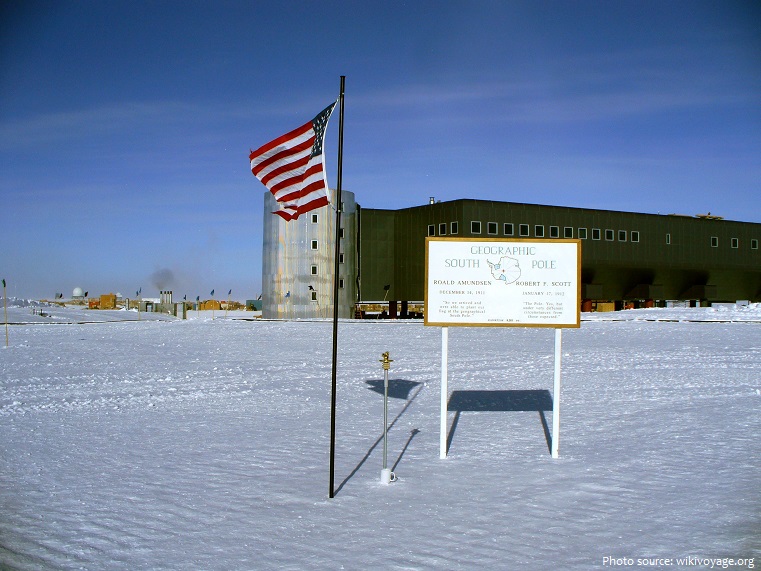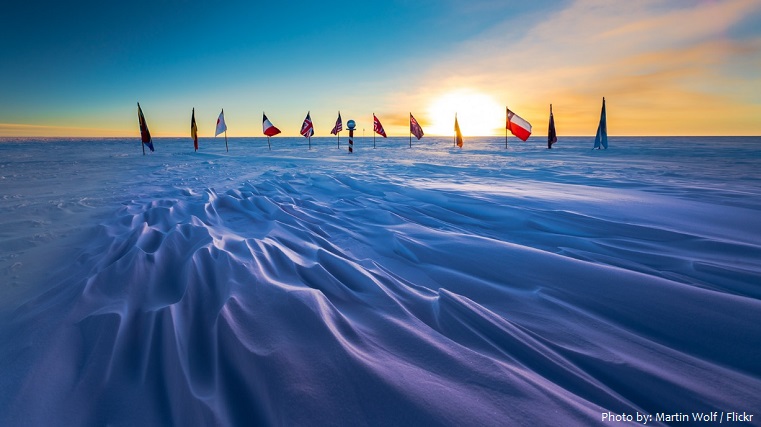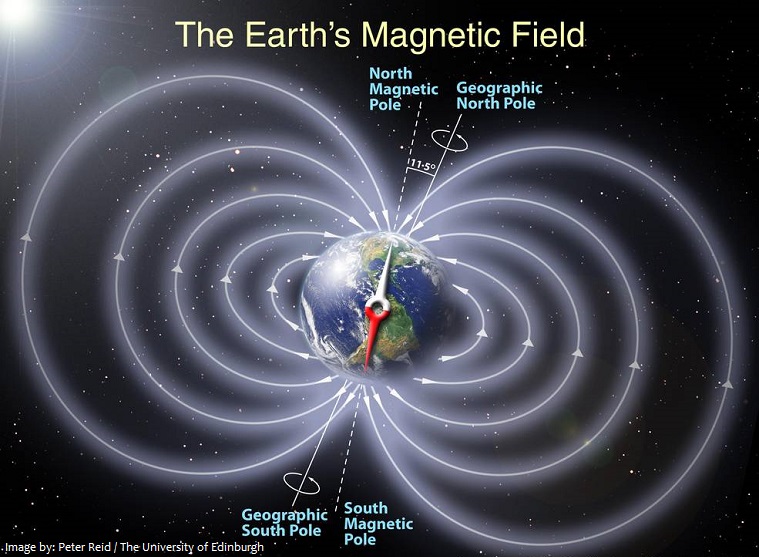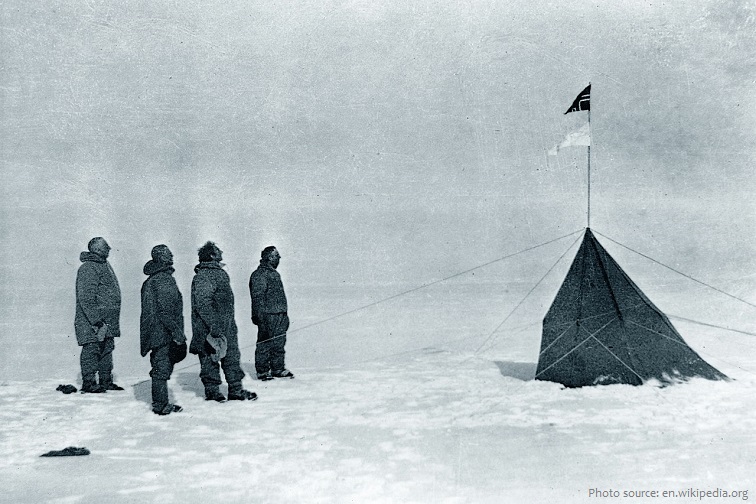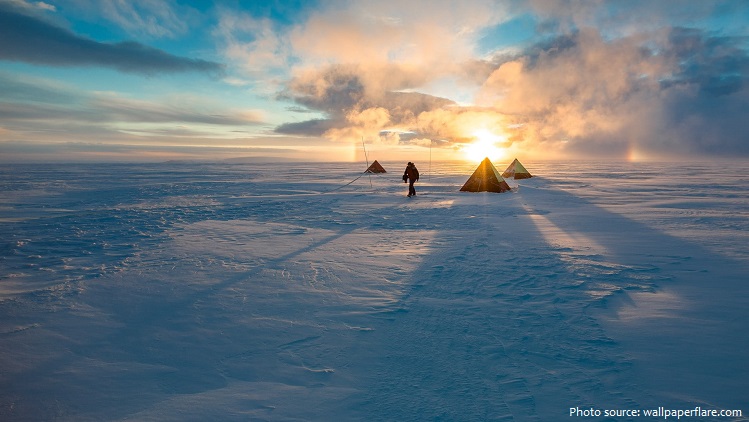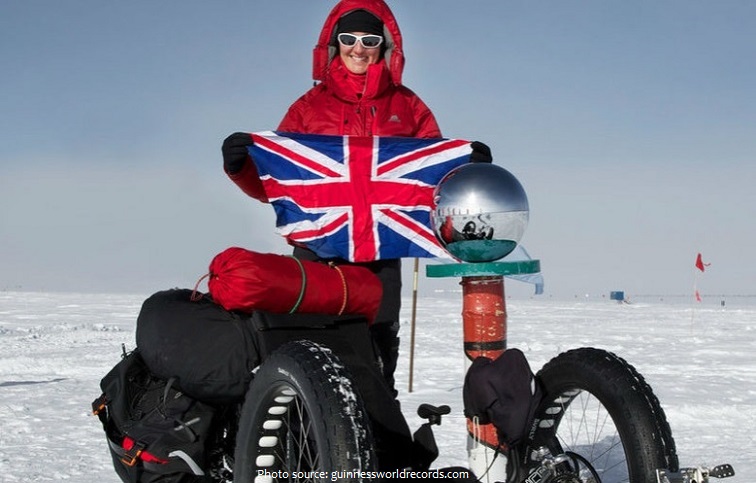The South Pole, also known as the Geographic South Pole or Terrestrial South Pole, is defined as one of the two points where the Earth‘s axis of rotation meets the Earth’s surface (the other being the North Pole, diametrically opposite).
It is the southernmost point on the Earth, and defines latitude 90° South.
The South Pole is situated on the continent of Antarctica.
It is located atop a featureless, barren, windswept and icy plateau at an altitude of 2,835 metres (9,301 ft) above sea level, and is located about 1,300 km (800 mi) from the nearest open sea at Bay of Whales. The ice is estimated to be about 2,700 metres (9,000 ft) thick at the Pole, so the land surface under the ice sheet is actually near sea level.
The Geographic South Pole is marked by a stake in the ice alongside a small sign; these are repositioned each year in a ceremony on New Year’s Day to compensate for the movement of the ice; the polar ice sheet is moving at a rate of roughly 10 metres (33 feet) per year.
The South Pole is the site of of the United States Amundsen–Scott South Pole Station, which was established in 1956 and has been permanently staffed since that year.
The South Pole has two seasons, summer and winter. The Sun at the South Pole is continuously above the horizon during the summer and continuously below the horizon during the winter. The South Pole receives no sunlight at all, and from May 11 to August 1.
The South Pole has a desert climate, almost never receiving any precipitation. Air humidity is near zero. However, high winds can cause the blowing of snowfall, and the accumulation of snow amounts to about 20 cm per year.
The South Pole has an average summer temperature of -28°C (-18°F); and an average winter temperature of -60°C (-76°F).
The geographic South Pole does not coincide with the magnetic South Pole. Located about 2,860 kilometers (1,780 miles) from the geographic South Pole lies the magnetic South Pole. However, this location is not fixed and is moving continually, even on a daily basis. The Earth’s magnetic South Pole is the focus of the planet’s magnetic field and is the point that traditional magnetic compasses point toward.
The entire continent of Antarctica has no official political boundaries, although many nations and territories claim land there. The South Pole is claimed by seven nations: Argentina, Australia, Chile, France, New Zealand, and the United Kingdom.
The first expedition to reach the geographic South Pole was led by the Norwegian explorer Roald Amundsen. He and four others arrived at the pole on 14 December 1911, five weeks ahead of a British party led by Robert Falcon Scott as part of the Terra Nova Expedition. Amundsen and his team returned safely to their base, and later heard that Scott and his four companions had died on their return journey.
US Admiral Richard Evelyn Byrd, with the assistance of his first pilot Bernt Balchen, became the first person to fly over the South Pole on November 29, 1929.
It was not until 31 October 1956 that humans once again set foot at the South Pole, when a party led by Admiral George J. Dufek of the US Navy landed there in an R4D-5L Skytrain (C-47 Skytrain) aircraft.
On December 30, 1989, Arved Fuchs and Reinhold Messner were the first to traverse Antarctica via the South Pole without animal or motorized help, using only skis and the help of wind.
The first hot air balloon flight over the South Pole is made by Ivan André Trifonov (Austria). He ballooned 14,934 m (49,000 ft) over the geographic South Pole Antarctica at an altitude of 4,571 m (15,000 ft) with his two Spanish crew members on 8 January 2000 in a Cameron AX 60 – EC-HDB hot air balloon.
The first person to cycle to the South Pole is British cyclist Maria Leijerstam. She departed from the edge of the Ross Ice Shelf in Antarctica on 17 December 2013 on her recumbent tricycle. She reached the South Pole 10 days 14 hr 56 min later, on 27 December 2013, having covered 638 km (396.43 miles).
Due to its exceptionally harsh climate, there are no native resident plants or animals at the South Pole. Remarkably, though, off-course south polar skuas and snow petrels are occasionally seen there.
Scientists published in the journal Gondwana Research that evidence had been found of dinosaurs with feathers to protect the animals from the extreme cold. The fossils had been found over 100 years ago in Koonwarra, Australia, but in sediment which had accumulated under a lake which had been near to the South Pole millions of years ago.


